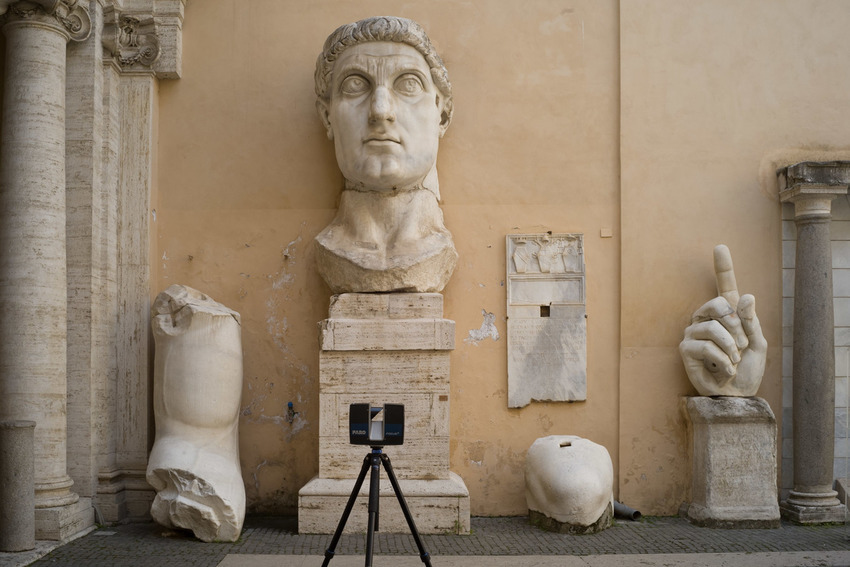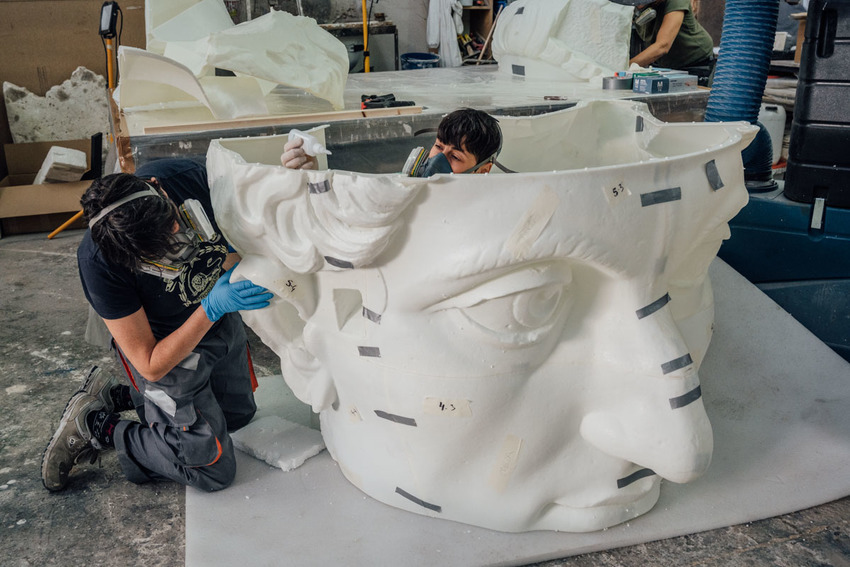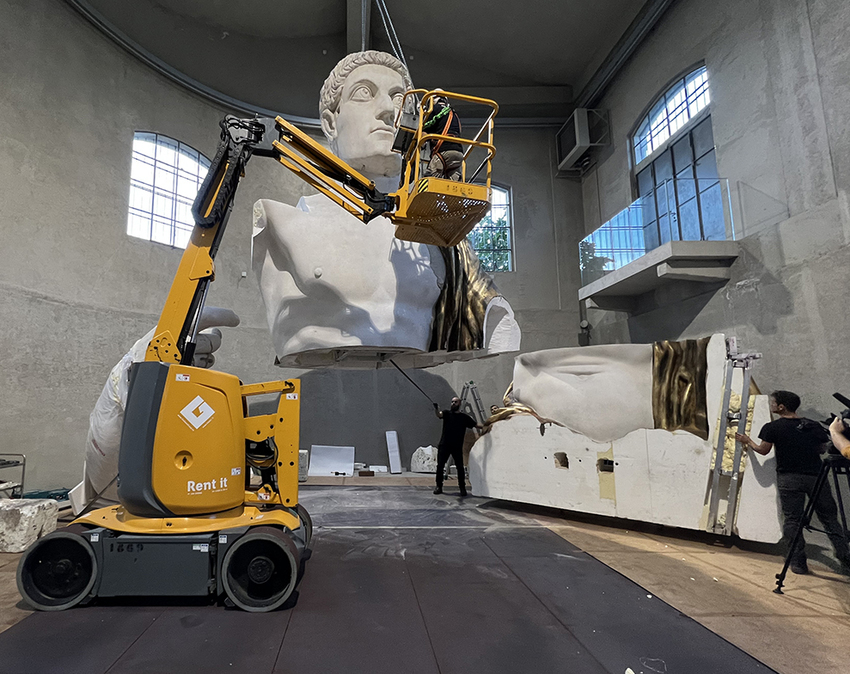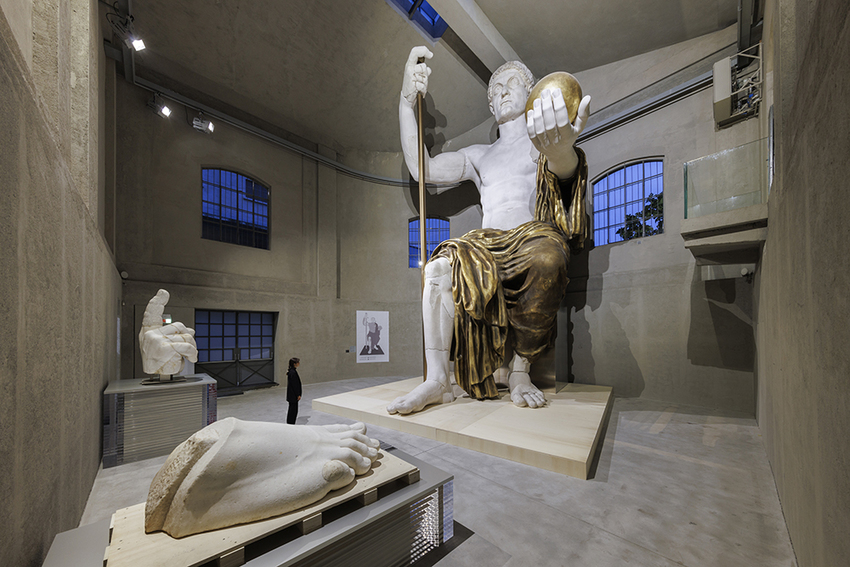It’s amazing how quickly art can get lost to history. From pillaging to simple misplacements, there are countless examples of classic works vanishing in an instant. However, today, that doesn’t have to be the case. With advancements in modern technology, scientists can now recreate art using just a few remaining fragments.
A great example of this comes from Italy, where the Factum Foundation and The Prada Foundation recently reconstructed a fourth century statue of the Colossus of Constantine. The piece was originally unveiled for Fondazione Prada’s “Recycling Beauty” exhibition and now sits inside the Roman gardens of Villa Caffarelli. The piece was recreated using 3D printing and other digital technologies, and the same process could be used to recreate other works in the future.
The Idea is Born
Now, if you fell asleep during your history class like I did and forgot who Constantine I was, don’t worry, you’re in good company. As a quick refresher, Constantine ruled from 306 AD to 337 AD and is best known for establishing Christianity as the official religion in the Roman Empire.
Sometime between 313 AD and 315 AD, a massive statue was constructed in his likeness, and it is believed to be readapted from a pagan version. This was meant to symbolize Christianity taking over as the major ideology and honor the person who enacted this era. Over time, the statue itself was raided for its bronze and destroyed into pieces. Fragments were later discovered in the Basilica de Maxentius, and then arranged by Michelangelo where they still stand in the Palazzo dei Conservatori to this day.

The remaining fragments from the original Constantine the Colossal statue in the Palazzo dei Conservatori. (Image courtesy of Otte Lowe, Factum Foundation)
Honestly, that could have been the end of the story: another great work lost to history—never to be seen again. And that might have been the case, if it wasn’t for Fondazione Prada’s curation of the third installment of its research based antique exhibit, “Recycling Beauty.”
The exhibit’s goal was to reuse and update Ancient Greco-Roman pieces for a modern audience. The group wanted to explore how a spectator’s understanding, feelings, and emotions were affected by the context and time in which they viewed the work. This would include numerous pieces from around the world, but the showstopper the foundation craved was a 1:1 recreation of Constantine the Colossal rebuilt from the fragments found in the Palazzo dei Conservatori.
Rebuilding the Colossus
To resurrect Constantine, Fondazione Prada partnered with Factum Foundation, a digital preservation non-profit from Madrid, and Musei Capitolini for this endeavor. Their task was simple: use the remaining fragments to build a digital model of the statue and then build said statue.
To create the digital model, Factum Foundation, led by Fancesco Cigogentti, Factum’s Technical Director, split into two groups. The first journeyed to Palazzo dei Conservatori to scan the remaining fragments of the original statue. The second traveled to Ara Pacis to scan the Parco Archelogico del Colosseo, a gypsum copy of a statue of the Emperor as Jupiter, to use as a pose reference. The teams used photogrammetry and LiDAR, to record the works and passed them along to Factum Arte’s 3D sculptor. Over several months, the artist meticulously designed the recreation with the help of curators and experts from Musei Capitolini as the engineering team developed the materials and inner structure to be used on the final statue.

The digital recreation of Constantine the Colossal by Irene Guamé, Factum Arte’s 3D sculptor. (Image courtesy of Irene Guamé, Factum Foundation)
3D printed molds based on the sculptor’s models were filled with polyurethane to create the statue’s shape, while resin mixed with marble powder and mica coated the outside surface to replicate the marble-white color commonly associated with Greco-Roman statues. The final structure sits at 42 feet tall (13 meters) and consists of thirty sections. It took a week to assemble within the exhibition space and towered over spectators as soon as they entered the gallery. In early February 2024, the piece was moved to the gardens of Villa Caffarelli, in the heart of Rome, where it will watch over the plaza until at least 2025. If you are curious to see it in person, plan your flights soon because it may be off to its next destination in the future.

Preparing for molding using the 3D printed head. (Image courtesy of Oak Taylor-Smith, Factum Foundation)

Assembling the statue within Prada’s exhibit space. (Image courtesy of Francesco Cigognetti Factum Foundation)
What Next?
This piece joins the growing movement within the art world of using 3D printing and modern technologies to help preserve artwork. As a part of the larger human collective, it should be our duty to preserve what we can for future generations. It helps us understand the past and prepare better for the future. I love that 3D printing is helping achieve that, and as someone who loves and appreciates art, I only hope this trend continues.
Subscribe to Our Email Newsletter
Stay up-to-date on all the latest news from the 3D printing industry and receive information and offers from third party vendors.
You May Also Like
New Report: Semiconductor Industry to See $1.4B in 3D Printing Revenues by 2032
“The semiconductor sector has become the most strategically significant area of global industry.” Truer words are hard to come by when it comes to the modern world, and they are...
Will Photonic-Crystal Lasers Revolutionize 3D Printing?
Powder bed fusion (PBF) for metals and polymers predominantly utilizes lasers as the primary heat source. Some directed energy deposition (DED) technologies also employ lasers, while various vat polymerization methods...
3D Printing Unpeeled: Orbex Investment, IndoMIM and HP, Ultrasonic Waves
INDO-MIM has bought three HP Metal Jet S100 printers, operating two in India and one in Texas. This is a win for HP because the company has deep experience in...
3D Printing Webinar and Event Roundup: April 21, 2024
It’s another busy week of webinars and events, starting with Hannover Messe in Germany and continuing with Metalcasting Congress, Chinaplas, TechBlick’s Innovation Festival, and more. Stratasys continues its advanced training...
































